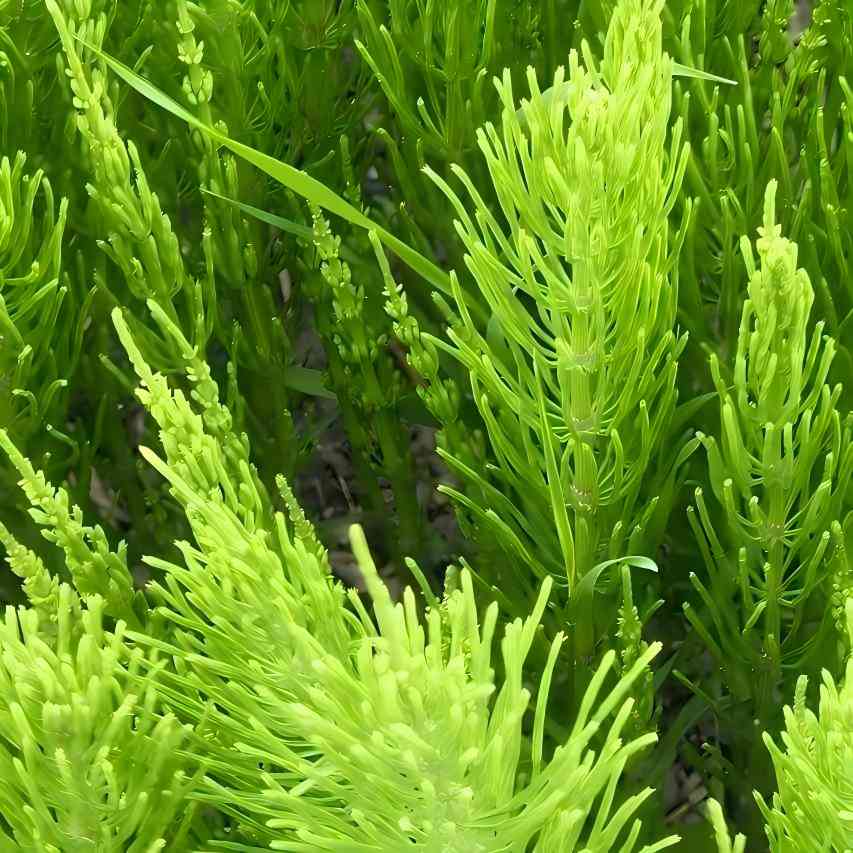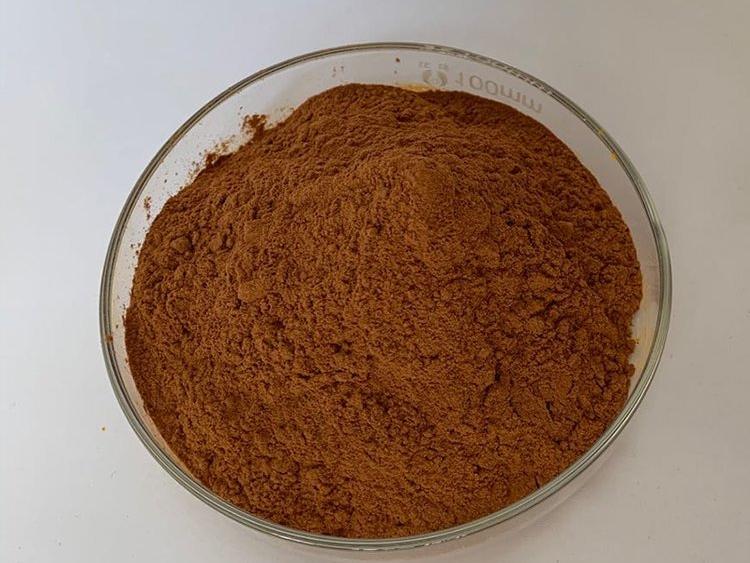Horsetail Extract (7% Organic Silica) Boosts Skincare Formulations
Horsetail is a time-honored natural plant documented in ancient medical texts for its properties to clear heat, stop bleeding, and promote blood circulation. Today, through in-depth modern scientific research, its value extends far beyond traditional applications—it is emerging as a highly sought-after star ingredient in the skincare industry.
Green Spring Technology selects premium Horsetail and employs innovative extraction techniques to produce a high-concentration Horsetail extract (7% Organic Silica). This encapsulates the energy of this ancient plant within modern scientific formulations, injecting potent “natural elasticity” into skincare development. The Horsetail used in this product primarily originates from high-purity regions like Heilongjiang and Jilin. Employing modern shade-drying techniques maximizes the retention of active components, ensuring consistent stability and efficacy in every batch.
This newly launched high-silicon-content Horsetail extract not only preserves the active properties of Horsetail in traditional applications but also significantly enhances its bioavailability in promoting collagen synthesis, boosting skin elasticity, and strengthening barrier function. It empowers brands to develop more competitive anti-aging, repairing, and fortifying skincare innovations.

1 How Horsetail Extract Empowers New Skincare Product Development
Horsetail extract is rich in multiple natural active ingredients, notably featuring high-concentration organic silicon (7%), providing a robust material foundation for skincare formulation development. Below are its key components and their application characteristics in skincare:
1.1 Silica Compounds — Enhancing Skin Texture
Water-soluble silica derivatives like silicic acid and silicates in the extract improve surface smoothness and radiance, making it suitable for products targeting skin texture refinement and elasticity maintenance.
1.2 Flavonoids — Antioxidant & Revitalizing
Horsetail contains multiple flavonoids, such as apigenin glucoside and curcumin glucoside. These components help defend against environmental stressors, improve skin condition, and are suitable for antioxidant and revitalizing skincare formulations.
1.3Phenolic Acids — Brightening and Conditioning
Phenolic acids like caffeic acid, ferulic acid, and vanillic acid in horsetail extract improve skin radiance and texture while providing gentle conditioning effects. They are suitable for brightening and balancing skincare products.
1.4 Glycosides — Hydration and Soothing
Natural glycosides in Horsetail extract, such as Horsetail Glycoside A, B, and C, offer excellent moisturizing and soothing properties. They help enhance skin barrier function and are suitable for hydrating and soothing products.
1.5 Other Auxiliary Components
Horsetail extract also contains natural nutrients like amino acids and trace vitamins, providing additional nourishment to the skin and synergistically enhancing the overall skincare experience.
2 High-Concentration Organic Silica Empowers Skincare Innovation: Horsetail Extract Facilitates Formulation Upgrades and New Product Development
The high concentration of organosilicon (7%) and other natural active ingredients in Horsetail extract provides significant support for its application in skincare products. Below are descriptions of some component characteristics and their benefits to formulations:
The significant content of organic silicon compounds (including silicic acid and silicates) in horsetail extract enhances skincare products' performance in improving skin feel and surface care, making it suitable for formulations targeting refined texture and radiance.
Research further indicates that horsetail's silicon compounds demonstrate positive potential in in vitro studies for supporting skin metabolism and resilience against environmental stressors. This contributes to overall skin health improvement, offering a natural raw material option for developing antioxidant and soothing skincare innovations.
Horsetail extract also contains natural components like flavonoids and phenolic acids. These substances help improve skin radiance and texture while enhancing the overall moisturizing and soothing properties of formulations, making them suitable for various functional skincare products.
Leveraging the synergistic effects of its high organic silicon content and other active ingredients, Horsetail extract serves as a key natural ingredient in skincare formulations, aiding in the development of more market-competitive skincare innovations.
3 Green Spring Technology's Horsetail Extract: Empowering New Skincare Product Development and Formulation Upgrades with 7% High-Concentration Organic Silica
Leveraging advanced plant extraction and purification technologies, Green Spring Technology now stably supplies high-content organosilicon (7%) Horsetail extract. This ingredient fully harnesses the multifaceted application value of natural components in skincare formulations, providing reliable support for brand clients developing next-generation skincare products.
Core advantages of Green Spring Technology's Horsetail Extract include:
⭐ High-concentration organic silicon enhances product performance: Significantly improves formulation smoothness and radiance, helping create products with a more luxurious skin feel;
⭐ Natural antioxidant and soothing potential: Synergizes with flavonoids and phenolic acids to help defend against environmental stressors and improve skin condition;
⭐ Mild compatibility for broad applicability: Suitable for antioxidant, soothing, moisturizing, and luminous skincare categories, meeting diverse formulation needs;
⭐ Consistent quality with reliable supply: Standardized process control prevents phenolic oxidation discoloration, ensuring batch consistency and stability.
Green Spring Technology is committed to providing clients with premium ingredients sourced from nature, featuring clear composition and predictable efficacy, jointly advancing the global recognition of Chinese skincare brands.
Contact us at helen@greenspringbio.com or WhatsApp: +86 13649243917 for free samples and technical documentation if you wish to explore application solutions for the 7% organosilicon raw material derived from Artemisia argyi extract, or request samples for formulation testing. We are committed to providing professional technical support and customized solutions to jointly advance skincare innovation and product enhancement.
참조:
[1] 장수신의대.한약대사전 [M].상하이:상하이과학기술신문, 1986.945
[2] 당나라 가 있습니다.Chen Cangqi (저자), Shang Zhijun (편집자 및 논객).해설 [M]을 통해 마테리얼을 보충한다.허페이:안휘과학기술신문, 2003.102
[3] 국가한의약관리국, 중국모태의학편집위원회.중국마테리아 [M].상하이:상하이과학기술신문사, 1999.56
[4] Syrchina A.I., Vorokov M.G, Tyukavkina N.A. Phenolic acid from Equisetum arvense [J].Khim다.prir다.soedin, 1975, 11(3), 416 쪽
[5] 바케, 잉거 리스 프랑크, 크링스타드, 란디.Nordal, Armole.Equisetum arvense L [J]의 수용성 산.액 타 광동 제약이다.대한의사협회, 1978, 15(2), 141
[6] 시르차이나 A.I., 보로코프 M.G., 티우카프키나 N.A..Naringenin), dihydrokaempferol, Equisetum arvense의 dihydroquercetin (J.Khim다.prir다.soedin, 1975, 11(3), 424
[7] Syrchina A.I., Zapesochnaya G.G., Tyukavkina N.A., 5-Glycosides of Equisetum arvense Flavones [J].Khim다.Prir다.Soedin, 1980, (3):413
[8] 창준, 이리장, 수야밍.Equisetum arvense [J]의 비옥한 새싹에서 추출한 세 가지 새로운 페놀성 글리코사이드.Acta Botanica Sinica, 2001, 43(2):193
[9] GiY B, Gao SY.Equisetum pratense의 총 알칼로이드가 쥐 뇌의 아미노산 신경전달물질 및 Ach의 함량에 미치는 영향 (J.Chinese Traditional Herb Drugs (중조), 2003, 34 (4):338
[10] Li SH, Jin DH, Li DK 외.Equisetum horsetail 조사 I. 화학성분 연구 [J.Chinese Traditional Herb Drugs (Zhong Cao Yao), 2000, 31(7):S-X-XI
[11] 아그가왈, 샨티 J., 라오 K. 크리슈나.마쓰바라, 히를시, 호르스테일 페레독신:분리 및 일부 화학 연구 [J].J. Biochem (도쿄), 1971, 69(3):610
-
Prev
Natural Valerian Extract Ingredient: Empowering Sleep Health Formulation Upgrades with Science
-
다음
Exploring Hop Extract as a Clean-Label Ingredient Solution for Natural Preservation


 영어
영어 프랑스
프랑스 스페인
스페인 러시아
러시아 한국
한국 일본
일본




